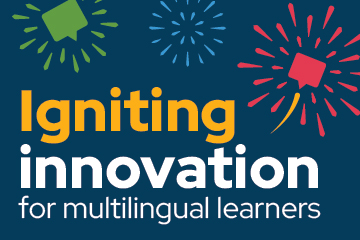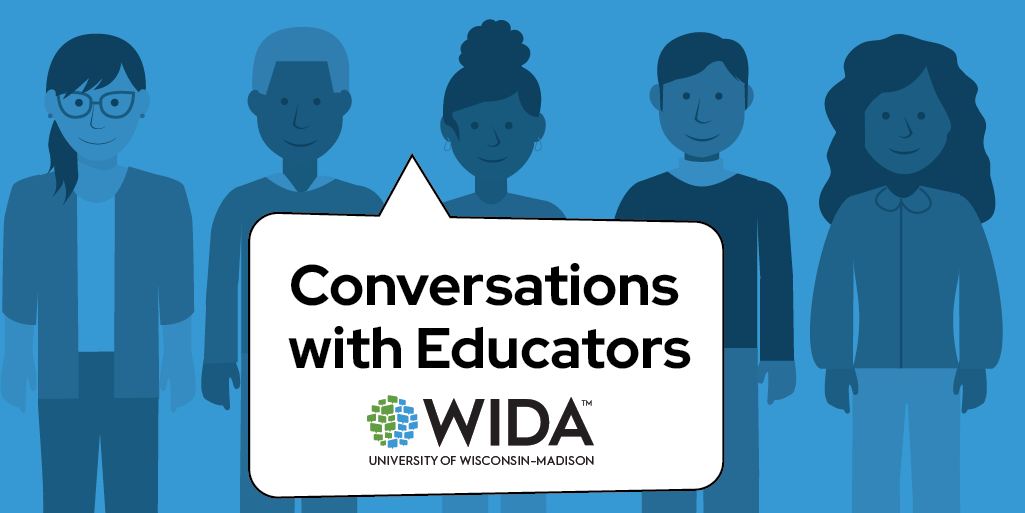Resources/Recursos
Featured Resources



All resources/Todos los recursos
Filter resources by:
Resources/Recursos
Long-term English Learners across 15 WIDA States
This research brief presents findings and policy implications from a recent research study exploring the so-called long-term English learner (LTEL) population across WIDA states. The findings highlight a continuing need for research that rejects an overly simplistic understanding of the LTEL designation. The next phase of this research will use student- and school-level data from three states to examine how individual and school factors can affect the diverse trajectories of ELs’ language development over time.
Published January 2019
Resource Details View Download NowReleased January 2019
Examination of Identification and Placement Decisions Made for K–12 English Learners
This study examines how 476 K–12 educators in 35 U.S. states identify and place English learners in language instruction educational programs. Findings reveal information about these educators, the instruments and information sources they use for decision making, and their perceived appropriateness of the decisions. Results provide practical implications for improving the English learner identification and placement decision at the district and school levels.
Resource DetailsReleased October 2018
Introducing WIDA
WIDA builds the foundations of success one classroom at a time. We know what multilingual students and their educators can do! We continually establish the industry’s best practices, support student advocacy and offer second to none professional development opportunities for teachers. Watch how we work!
Resource DetailsReleased August 2018
Including Recently Arrived English Learners in State Accountability Systems: An Empirical Illustration of Models
Based on a U.S. Department of Education guide, these model analyses illustrate procedures a state could use to compare and contrast school-level overall and English learner accountability determinations for proficiency in reading/language arts. These examples are provided only to illustrate how a state could undertake them as part of its efforts to develop and explore a theory of action for assessment of recently arrived English learners.
Resource DetailsReleased March 2017
Interpretation and Use of K–12 Language Proficiency Assessment Score Reports: Perspectives of Educators and Parents
This paper examine how 18 K–12 educators from 13 states and 12 parents from two states interpret and use score reports from the WIDA ACCESS for ELLs. Educators frequently referred to the proficiency level index of the four language domains of listening, speaking, reading, and writing, and the composite domains to interpret student performance, to make school-level decisions about programming and lesson planning, and to inform district-level budgeting and professional development. Parents found the score report to be helpful, but rarely took additional actions to use its information.
Resource DetailsReleased November 2016
Can Do Descriptors Name Charts, Grades K-12
This chart allows educators to track students by their level of English language proficiency.
Resource Details View Download NowReleased January 2016
Students with Limited or Interrupted Formal Education (SLIFE)
This WIDA Focus Bulletin focuses on the needs of students who have limited or interrupted formal education (SLIFE). Because the vast majority of students in this group are enrolled in grades 6 through 12, we will focus on those grade levels. However, many of the tips and suggestions can be applied in lower grade levels as well. Throughout the bulletin we will explore academic and social-emotional factors that may affect this group of students, examine the benefits of building community partnerships, address how to assess student readiness levels, and offer a checklist of considerations for instructional planning.
Published May 2015
Authors: Lauren Keppler, Lucia Morales, Julia Cortada, Maria Austin
Released June 2015
ENL New Arrival High School Students: Encouraging Communication in a New Language
WIDA Video Contest Winner
Mindy Lewis-Hitch develops a grade-level, standards-based unit and provides her ninth graders with clear modeling and guided practice using game-type activities for Romeo and Juliet. Mindy also demonstrates working with colleagues to help raise awareness of scaffolding lessons so all learners can be engaged.
Resource DetailsReleased June 2015
Academic Vocabulary Development
WIDA Video Contest Winner
Andy Mizell plans engaging instruction that scaffolds learning for the wide range of English proficiency levels in his middle school ELL class. He begins by assessing his students and collaborating with other teachers to extend his academic language instruction across subject areas.
Resource DetailsReleased June 2015
Examining District-Level Growth Using ACCESS for ELLs
This research report provides a description of a study examining school districts in the WIDA Consortium whose English language learners (ELLs) exhibit consistently high growth on the ACCESS for ELLs (ACCESS) assessment.
Published August 2014
Authors: Narek Sahakyan, H. Gary Cook
Released August 2014
Title III National Evaluation Supplemental Report
This report addresses three primary questions:
1. How do you determine a meaningful English language performance standard?
2. How do you establish a realistic, empirically anchored time frame for attaining a given ELP performance standard?
3. How can states take into account English learners’ English language performance level when setting academic progress and proficiency expectations?
Published May 2013
Resource Details View Download NowReleased May 2013
Can Do Booklet Grades 1-2
This booklet complements the WIDA English Language Proficiency Standards and provides a valuable set of resources aligned to the Performance Definitions for the levels of English language proficiency.
Resource Details View Download NowReleased April 2013
Can Do Booklet Grades 3-5
This booklet complements the WIDA English Language Proficiency Standards and provides a valuable set of resources aligned to the Performance Definitions for the levels of English language proficiency.
Resource Details View Download NowReleased April 2013
Can Do Booklet Grades 6-8
This booklet complements the WIDA English Language Proficiency Standards and provides a valuable set of resources aligned to the Performance Definitions for the levels of English language proficiency.
Resource Details View Download NowReleased April 2013
Can Do Booklet Grades 9-12
This booklet complements the WIDA English Language Proficiency Standards and provides a valuable set of resources aligned to the Performance Definitions for the levels of English language proficiency.
Resource Details View Download NowReleased April 2013
Can Do Descriptors, Original Edition, Student Name Charts, Grades K-12
This chart allows educators to track students by their level of English language proficiency.
Resource Details View Download NowReleased April 2013
District Readiness to Implement Standards-Based Reform for English Language Learners a Decade After No Child Left Behind Act
This 16-state survey of school districts with fewer than 500 English language learners revealed that few district-level English language learner staff had formal preparation in educating English language learner or using English language proficiency standards. A wide school-level disparity existed between English as a second language or bilingual teachers and general education teachers in terms of their engagement with proficiency standards and assessment data.
Resource DetailsReleased April 2012




